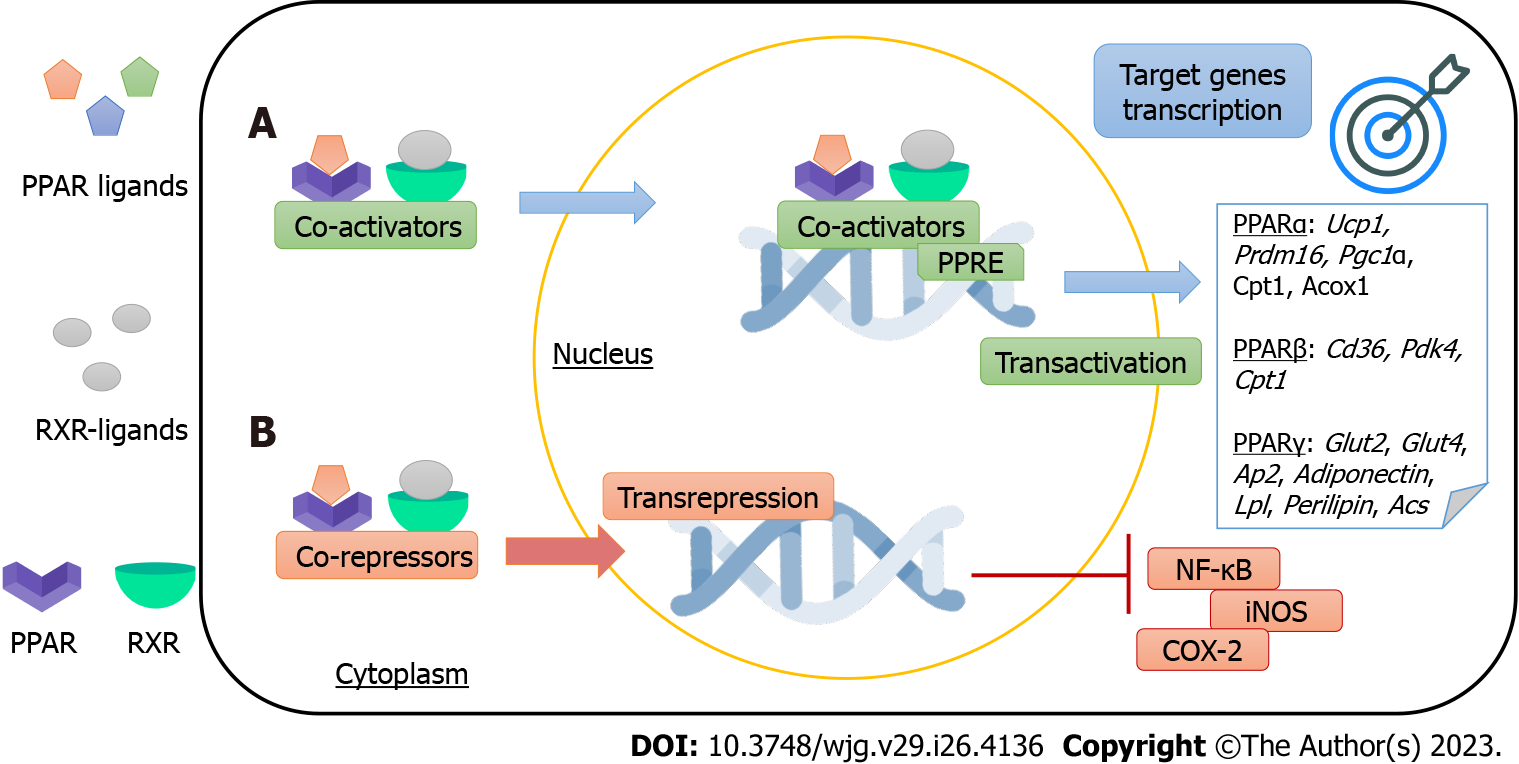Copyright
©The Author(s) 2023.
World J Gastroenterol. Jul 14, 2023; 29(26): 4136-4155
Published online Jul 14, 2023. doi: 10.3748/wjg.v29.i26.4136
Published online Jul 14, 2023. doi: 10.3748/wjg.v29.i26.4136
Figure 1 Peroxisome proliferator-activated receptors mechanisms of action.
Proliferator-activated receptors (PPARs) are ligand-activated transcription factors that regulate gene expression through two different mechanisms. A: PPAR-retinoid X receptor heterodimers bind to DNA-specific sequences called peroxisome proliferator-response elements to trigger target genes transcription (transactivation). PPARs’ target genes include thermogenic [Ucp1, PPAR-gamma coactivator 1 alpha (Pgc1α), and PR domain containing 16 (Prdm16)], mitochondrial and peroxisomal [carnitine palmitoyltransferase I (Cpt1), peroxisomal acyl-coenzyme A oxidase (Acox), and pyruvate dehydrogenase kinase 4 (Pdk4)], anti-inflammatory (Adiponectin), insulin-sensitizing [glucose transporter 2 (Glut2), Glut4], and adipocyte metabolism [Cd36, adipocyte protein 2 (Ap2), lipoprotein lipase (Lpl), Perilipin, and acetyl CoA synthetase (Acs)] genes; B: PPARs regulate gene expression through transrepression, a DNA-independent mechanism. For example, PPARs inhibits the activity of nuclear factor kappa b and enzymes, yielding anti-inflammatory effects. Abbreviations: Uncoupling protein 1, Pgc1α, Prdm16, Cpt1, peroxisomal Acox, Pdk4, Glut, Ap2, Lpl, and Acs, inducible nitric oxide synthase, nuclear factor kappa B, and ciclooxigenase-2. PPARs: Peroxisome proliferator-activated receptors; RXR: Retinoid X receptor; PPRE: PPAR-responsive elements; NF-κB: Nuclear factor kappa B; iNOS: Inducible nitric oxide synthase; COX-2: Ciclooxigenase-2.
- Citation: Souza-Tavares H, Miranda CS, Vasques-Monteiro IML, Sandoval C, Santana-Oliveira DA, Silva-Veiga FM, Fernandes-da-Silva A, Souza-Mello V. Peroxisome proliferator-activated receptors as targets to treat metabolic diseases: Focus on the adipose tissue, liver, and pancreas. World J Gastroenterol 2023; 29(26): 4136-4155
- URL: https://www.wjgnet.com/1007-9327/full/v29/i26/4136.htm
- DOI: https://dx.doi.org/10.3748/wjg.v29.i26.4136









